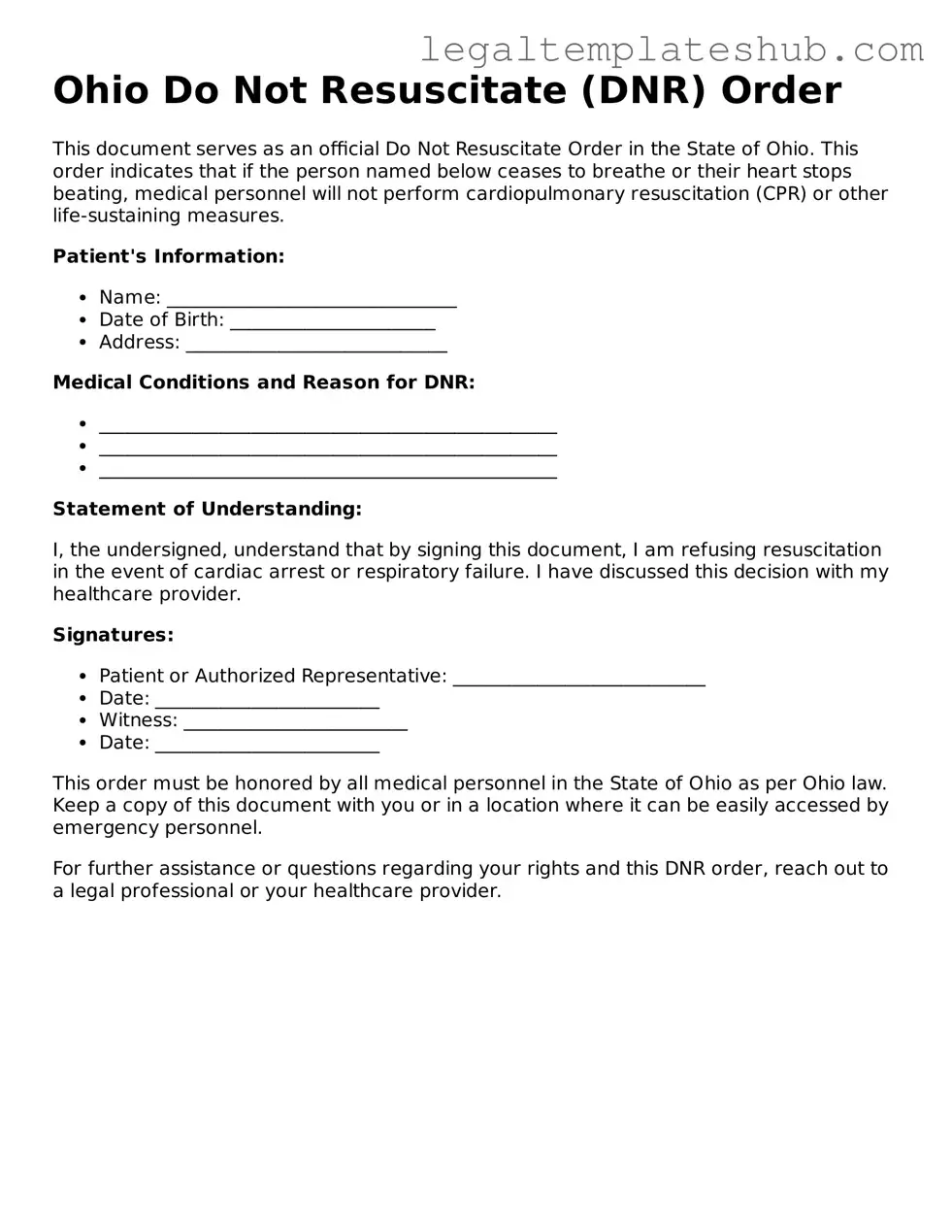Printable Do Not Resuscitate Order Document for Ohio
A Do Not Resuscitate (DNR) Order in Ohio is a legal document that allows individuals to refuse cardiopulmonary resuscitation (CPR) in the event of cardiac arrest. This form is essential for ensuring that a person's wishes regarding medical treatment are respected during emergencies. Understanding how to properly fill out and implement this form is crucial for anyone considering their end-of-life care options.
Take the first step in making your healthcare wishes known by filling out the DNR Order form. Click the button below to get started.
Access Editor
